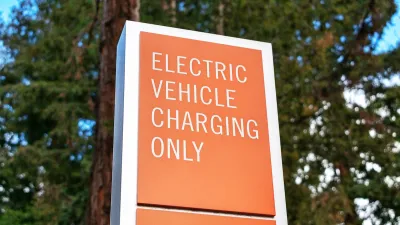Two years after Governor Andrew Cuomo outlined an ambitious 10-year, $1 billion effort to revive the Buffalo Niagara economy, the areas targeted for investment are beginning to become clear, reports David Robinson.

The help Buffalo "[turn] around an economy that has missed out on much of the nation’s growth over the past half century", the State of New York is planning to replicate an economic development strategy that spurred billions of dollars in private investment and created thousands of jobs in Albany, explains Robinson. "The Buffalo Billion is following the Albany model to try to create a hub for clean energy research and manufacturing, as well as a center for medical genomics research centered around the University at Buffalo’s supercomputing capabilities."
"But the most immediate benefit of the Buffalo Billion is its 'shock and awe' value. It has already brought the Buffalo Niagara region notice as a place where something is going on. State officials hope that positive attention will build on the Buffalo Billion’s momentum."
Robinson details nine projects that are in line to receive funding as part of the initiative:
- $225 million towards a high tech manufacturing innovation hub at RiverBend
- $50 million towards a medical innovation and commercialization hub
- $50 million towards a genomic research partnership
- $10+ million towards workforce training and development
- "ten of millions" towards an Institute for Advanced Manufacturing Competitiveness
- $20 million towards the downtown Niagara Falls development challenge
- $11.5 million towards Robert Moses Parkway removal
- $4.5 million to stimulate the city's visual effects industry
- an unknown amount to help transform a vacant mall owned by the city of Niagara Falls into a mixed-use complex
FULL STORY: Your guide to the Buffalo Billion

Trump Administration Could Effectively End Housing Voucher Program
Federal officials are eyeing major cuts to the Section 8 program that helps millions of low-income households pay rent.

Planetizen Federal Action Tracker
A weekly monitor of how Trump’s orders and actions are impacting planners and planning in America.

The 120 Year Old Tiny Home Villages That Sheltered San Francisco’s Earthquake Refugees
More than a century ago, San Francisco mobilized to house thousands of residents displaced by the 1906 earthquake. Could their strategy offer a model for the present?

Alabama School Forestry Initiative Brings Trees to Schoolyards
Trees can improve physical and mental health for students and commnity members.

NYC Outdoor Dining Could Get a Re-Do
The city council is considering making the al fresco dining program year-round to address cost concerns from small businesses.

HSR Reaches Key Settlement in Northern California City
The state’s high-speed rail authority reached an agreement with Millbrae, a key city on the train’s proposed route to San Francisco.
Urban Design for Planners 1: Software Tools
This six-course series explores essential urban design concepts using open source software and equips planners with the tools they need to participate fully in the urban design process.
Planning for Universal Design
Learn the tools for implementing Universal Design in planning regulations.
Ada County Highway District
Clanton & Associates, Inc.
Jessamine County Fiscal Court
Institute for Housing and Urban Development Studies (IHS)
City of Grandview
Harvard GSD Executive Education
Toledo-Lucas County Plan Commissions
Salt Lake City
NYU Wagner Graduate School of Public Service





























